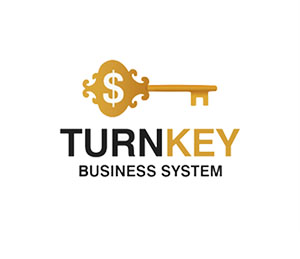Mastering Risk Management in Binary Options Trading: The Key to Consistent Profits

Mastering Risk Management in Binary Options Trading: The Key to Consistent Profits
Binary options trading has gained significant popularity due to its simplicity and potential for high returns. However, it is also a high-risk financial instrument that requires careful planning and disciplined execution.
The key to long-term success in binary options trading lies not only in identifying profitable opportunities but also in implementing robust risk management strategies.
In this article, we will explore the importance of risk management, common pitfalls to avoid, and actionable steps to optimize your approach to trading binary options.
The key to long-term success in binary options trading lies not only in identifying profitable opportunities but also in implementing robust risk management strategies.
In this article, we will explore the importance of risk management, common pitfalls to avoid, and actionable steps to optimize your approach to trading binary options.

Mastering Risk Management in Binary Options Trading: The Key to Consistent Profits
Understanding Binary Options Trading
Before diving into risk management, it’s essential to understand what binary options are and how they work. A binary option is a financial derivative that allows traders to speculate on whether the price of an asset (such as stocks, currencies, commodities, or indices) will rise or fall within a specified timeframe. Unlike traditional trading, where profits depend on the magnitude of price movements, binary options offer fixed payouts if the trader’s prediction is correct, and a total loss if it is wrong.This all-or-nothing nature makes binary options inherently risky. Without proper risk management, traders can quickly deplete their accounts, even if their predictions are occasionally accurate. Therefore, optimizing risk management is crucial for sustainable trading.
Why Risk Management Matters in Binary Options
Risk management is the process of identifying, assessing, and mitigating risks to protect capital and maximize returns. In binary options trading, effective risk management serves several purposes:Capital Preservation: Protecting your trading account from significant losses ensures you have funds available for future trades.
Emotional Control: By managing risk, traders reduce stress and make more rational decisions, avoiding emotional trading.
Consistency: A well-structured risk management plan helps maintain consistency in performance, regardless of market conditions.
Longevity: Traders who prioritize risk management are more likely to survive market volatility and stay in the game longer.
Without a solid risk management strategy, even skilled traders can fall victim to poor decision-making and unsustainable practices.
Common Pitfalls in Binary Options Trading
To optimize risk management, it’s important to recognize the common mistakes that lead to losses in binary options trading:1. Overtrading
Many traders succumb to the temptation of placing too many trades in a short period, hoping to recover losses or chase quick profits. This behavior increases exposure to risk and often results in poor decision-making.
2. Ignoring Position Sizing
Failing to allocate appropriate amounts of capital to each trade is a recipe for disaster. Betting too much on a single trade can wipe out your account, while betting too little may limit growth potential.
3. Lack of a Trading Plan
Entering trades without a clear strategy or predefined rules leaves traders vulnerable to impulsive decisions. A lack of discipline often leads to inconsistent results and unnecessary risks.
4. Emotional Decision-Making
Fear and greed are two emotions that can sabotage trading success. Panic selling after losses or doubling down on losing positions can exacerbate problems rather than solve them.
5. Neglecting Market Analysis
Relying solely on intuition or random guesses instead of conducting thorough technical and fundamental analysis increases the likelihood of incorrect predictions.
By addressing these pitfalls, traders can significantly improve their chances of success.
Key Principles of Optimized Risk Management
To minimize risks and enhance profitability, consider adopting the following principles:1. Define Your Risk-Reward Ratio
Before placing any trade, determine the potential reward relative to the risk. A common guideline is to aim for a minimum risk-reward ratio of 1:2, meaning the potential profit should be at least twice the amount risked. For example, if you risk 100,aimforareturnof200.
2. Use Proper Position Sizing
Never risk more than a small percentage of your trading account on a single trade—typically no more than 1-2%. This ensures that even a series of losing trades won’t decimate your capital. For instance, if your account balance is 5,000,limityourriskpertradeto50-$100.
3. Set Stop-Loss Limits
While binary options don’t have traditional stop-loss orders, traders can use mental stops or predefine the maximum amount they’re willing to lose on a trade. Stick to these limits religiously to prevent overexposure.
4. Diversify Your Portfolio
Avoid concentrating all your trades on a single asset or market. Spread your investments across different instruments and sectors to reduce dependency on any one outcome.
5. Maintain a Trading Journal
Keeping a detailed record of your trades—including entry/exit points, reasons for the trade, and outcomes—helps identify patterns and areas for improvement. Regularly reviewing your journal fosters accountability and continuous learning.
6. Leverage Technology
Use tools like indicators, charting software, and automated systems to analyze markets and execute trades efficiently. These resources can help eliminate guesswork and improve accuracy.
Strategies for Effective Risk Management
Here are some practical strategies to optimize risk management in binary options trading:1. Start with a Demo Account
If you’re new to binary options, practice using a demo account before committing real money. This allows you to test strategies and refine your approach without risking capital.
2. Implement Hedging Techniques
Hedging involves opening opposing positions to offset potential losses. For example, if you predict that an asset will rise but want to hedge against downside risk, you could simultaneously place a “put” option alongside a “call” option. While this reduces potential profits, it also limits losses.
3. Focus on High-Probability Trades
Prioritize trades with higher probabilities of success based on technical signals, historical data, and market trends. Avoid speculative bets on unpredictable events.
4. Avoid Martingale Strategies
The Martingale system—which involves doubling your stake after every loss—can quickly escalate risks and lead to catastrophic losses. Instead, adopt conservative staking plans that align with your risk tolerance.
5. Monitor Economic Events
Stay informed about economic news, earnings reports, and geopolitical developments that could impact asset prices. Sudden market movements can invalidate predictions and increase risks.
6. Limit Daily Losses
Set a daily loss limit to prevent overtrading during losing streaks. Once you reach this threshold, step away from the market and reassess your strategy.
Advanced Tools for Risk Mitigation
Modern technology offers several advanced tools to assist with risk management in binary options trading:1. Virtual Private Servers (VPS)
A VPS ensures uninterrupted connectivity, reducing the risk of missed trades due to technical issues or internet outages.
2. Algorithmic Trading Systems
Automated bots can execute trades based on predefined criteria, eliminating emotional biases and ensuring consistent application of risk management rules.
3. Real-Time Alerts
Subscribe to services that provide real-time alerts about market movements, allowing you to respond promptly to changing conditions.
4. Backtesting Platforms
Test your strategies on historical data to evaluate their effectiveness before applying them in live markets. This minimizes trial-and-error costs.
Psychological Aspects of Risk Management
Successful risk management isn’t just about numbers—it’s also about mindset. Here are some psychological tips to enhance your risk management efforts:1. Stay Disciplined
Stick to your trading plan, even when emotions run high. Avoid deviating from your strategy due to fear or excitement.
2. Accept Losses as Part of the Game
No trader wins every time. Accepting losses gracefully prevents reckless behavior aimed at recovering funds quickly.
3. Take Breaks
Regular breaks help maintain focus and prevent burnout. Step away from the screen during periods of frustration or fatigue.
4. Learn Continuously
Education is an ongoing process. Stay updated on market trends, trading techniques, and risk management best practices.
Conclusion: Building a Sustainable Approach to Binary Options Trading
Binary options trading offers exciting opportunities for profit, but it demands a disciplined approach to risk management. By understanding the mechanics of binary options, avoiding common pitfalls, and implementing proven strategies, traders can optimize their risk management practices and increase their chances of long-term success.Remember, the goal is not to eliminate risk entirely—it’s to manage it effectively. With proper planning, continuous learning, and adherence to sound principles, you can navigate the complexities of binary options trading and achieve sustainable growth. Whether you’re a beginner or an experienced trader, prioritizing risk management is the foundation of a successful trading career.
#BinaryOptions #RiskManagement #TradingSuccess














Report
My comments